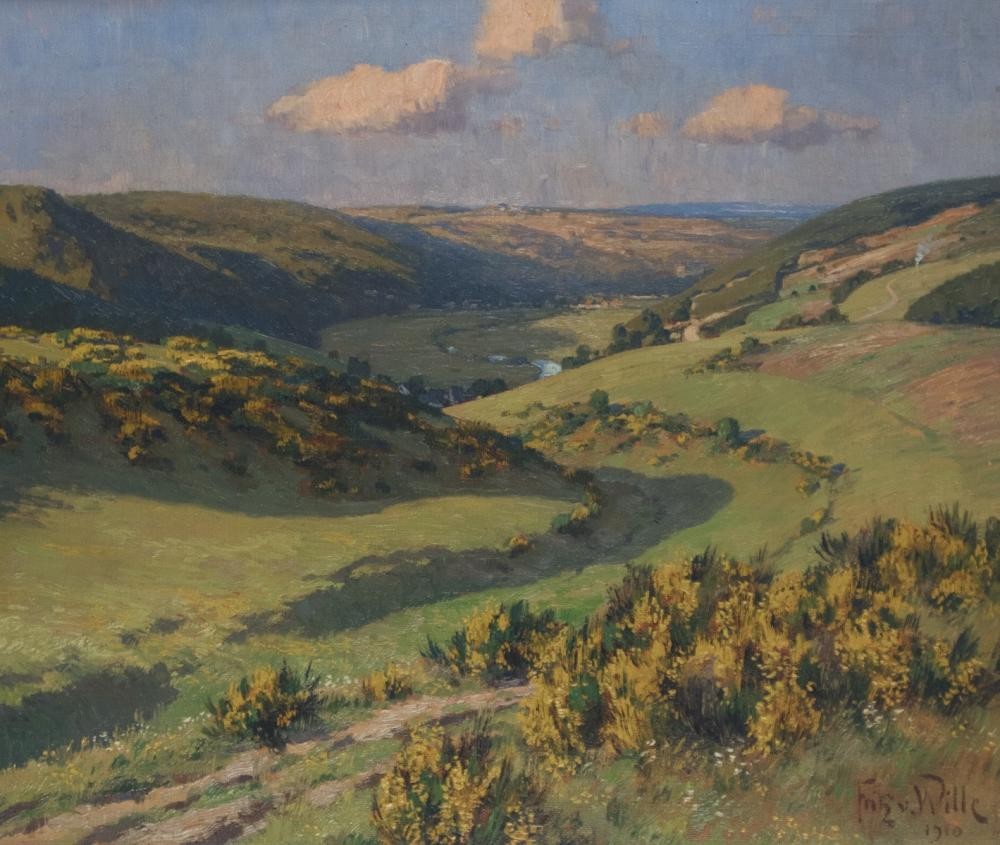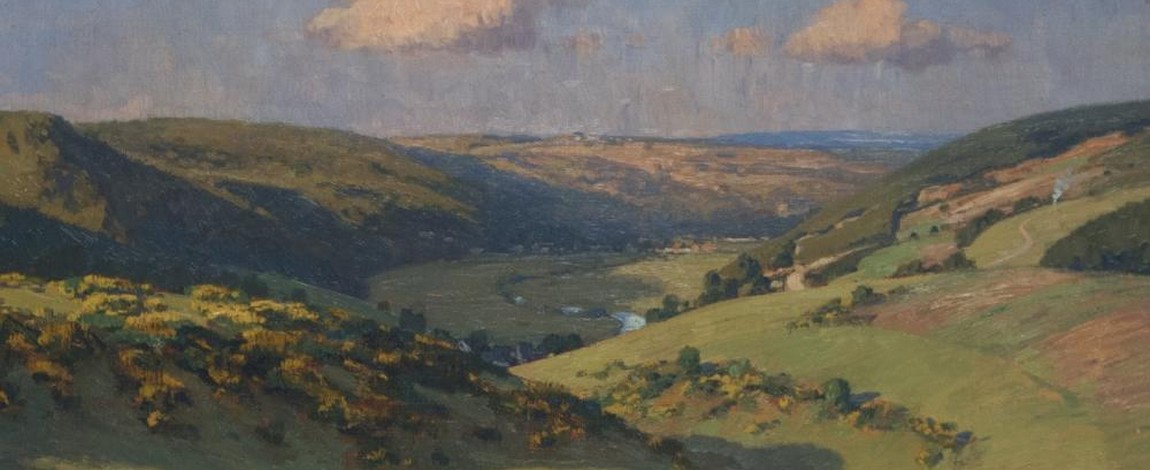
July has arrived, so we end up the regular Liederabend season and launch the summer edition. We’ll feature our traditional posts dedicated especially to those readers who, despite the heat, still need their weekly song (much appreciated!), posts marked by having the same music but very little text.
For the five Wednesdays in July, I’ve planned five more posts in the “The same poem, one more song” series. As you know, in this series we take a poem we’ve heard set to music before and explore new settings; usually I present the best-known version first, and from there others emerge that show how the same poem inspires different composers. Sometimes even the same composer because some of them, like Schubert and Liszt, for instance, were prone to it.
That isn’t the case with Brahms, though. So I was surprised to learn he wrote two songs on the poem beginning “Da unten im Tale” [“Down in the valley there”]. The poem appears in the collection Deutsche Volkslieder mit ihren Originalweisen (German Folksongs with Their Original Melodies, 1840), compiled by Andreas Kretzscher and, after his death, by Anton von Zuccalmaglio. The best‐known of Brahms’s two settings—the one we’ve already heard—shares the title Da unten im Tale and is No. 6 in his Deutsche Volkslieder, WoO 33, published in 1894 after more than fifty years of work. Its music is unmistakably folk‐inspired, and, in principle, the melody remains more or less faithful to the original collected tune.
The version I’m presenting today was composed in 1885 and published the following year as Trennung [“Separation”], Op. 97/6. Here, Brahms’s music is more sophisticated, in that it doesn’t so overtly signal the song’s folk origins. It is strophic, however, and shares one element with the earlier setting: the piano interlude between stanzas is identical. So once you know one of the songs, the piano part leads you straight to the other.
Knowing that part of the music is common, one might ask which setting came first. That’s a question I can’t answer, since the songs of the Deutsche Volkslieder are not dated. So… no idea. Another question without a clear answer is why one setting is so well-known and the other so unknown, considering that both are beautiful. It might be related to the Da unten im Tale melody's contagious nature; here is the performance I shared a few months ago. In this post, we’ll listen to Trennung performed by Harriet Burns and Graham Johnson.
Da unten im Tale
Läufts Wasser so trüb,
Und i kann dirs net sagen,
I hab di so lieb.
Sprichst allweil von Liebe,
Sprichst allweil von Treu,
Und a bissele Falschheit
Is auch wohl dabei.
Und wenn i dirs zehnmal sag,
Daß i di lieb,
Und du willst nit verstehn, muß i
Halt weiter gehn.
Für die Zeit, wo du g’liebt mi hast,
Dank i dir schön,
Und i wünsch, daß dirs anderswo
Besser mag gehn.
Down in the valley there
the water flows so sadly,
and I can't tell you
that I love you so.
You always speak of love,
you always speak of fidelity,
but a bit of falsehood
is always there too.
And if I tell you ten times,
that I love and like you,
and you do not want to understand,
then I will have to move on.
For the time that you have loved me,
I thank you kindly,
and I wish that somewhere else
things may go better for you.















Comments powered by CComment